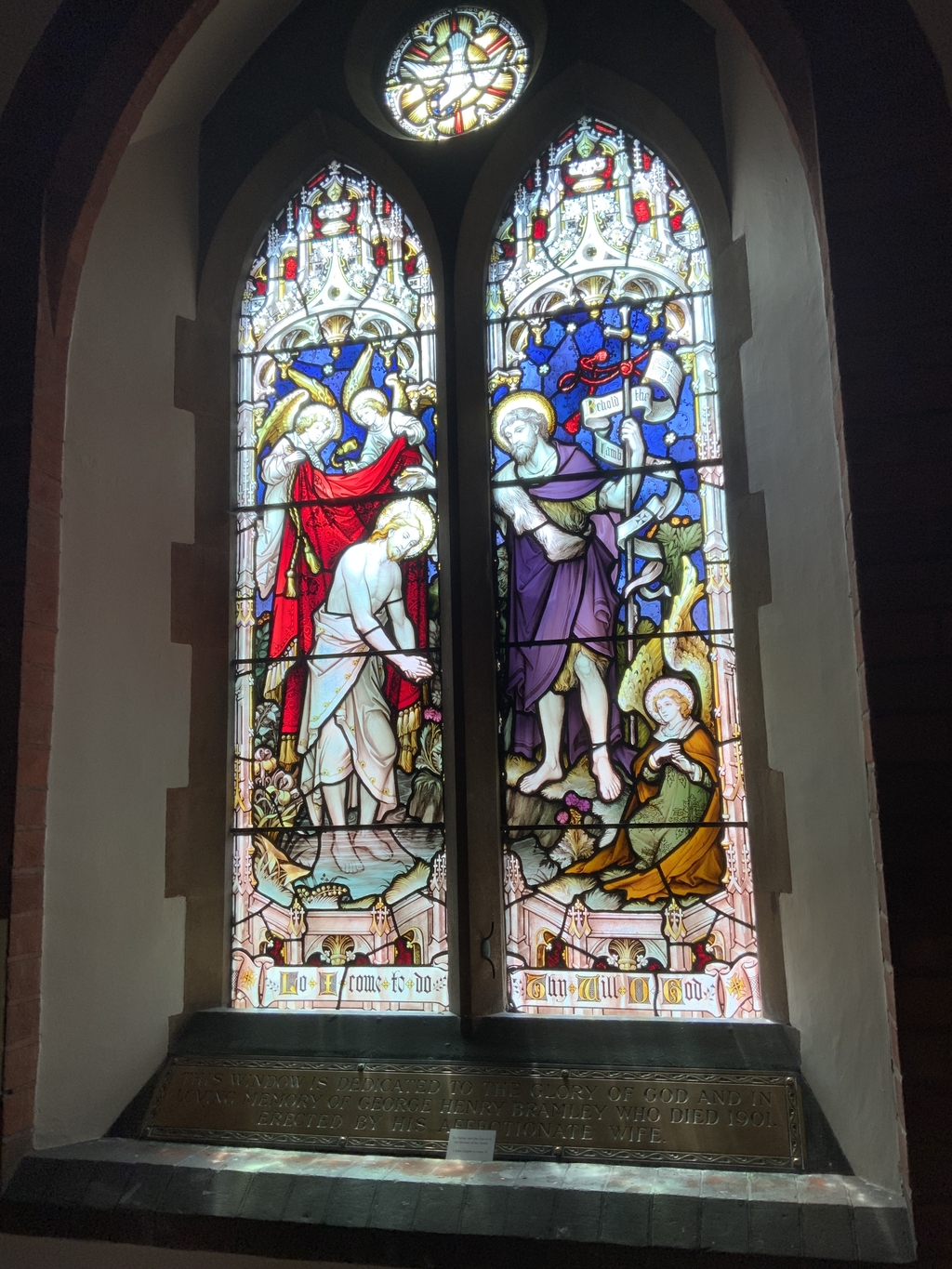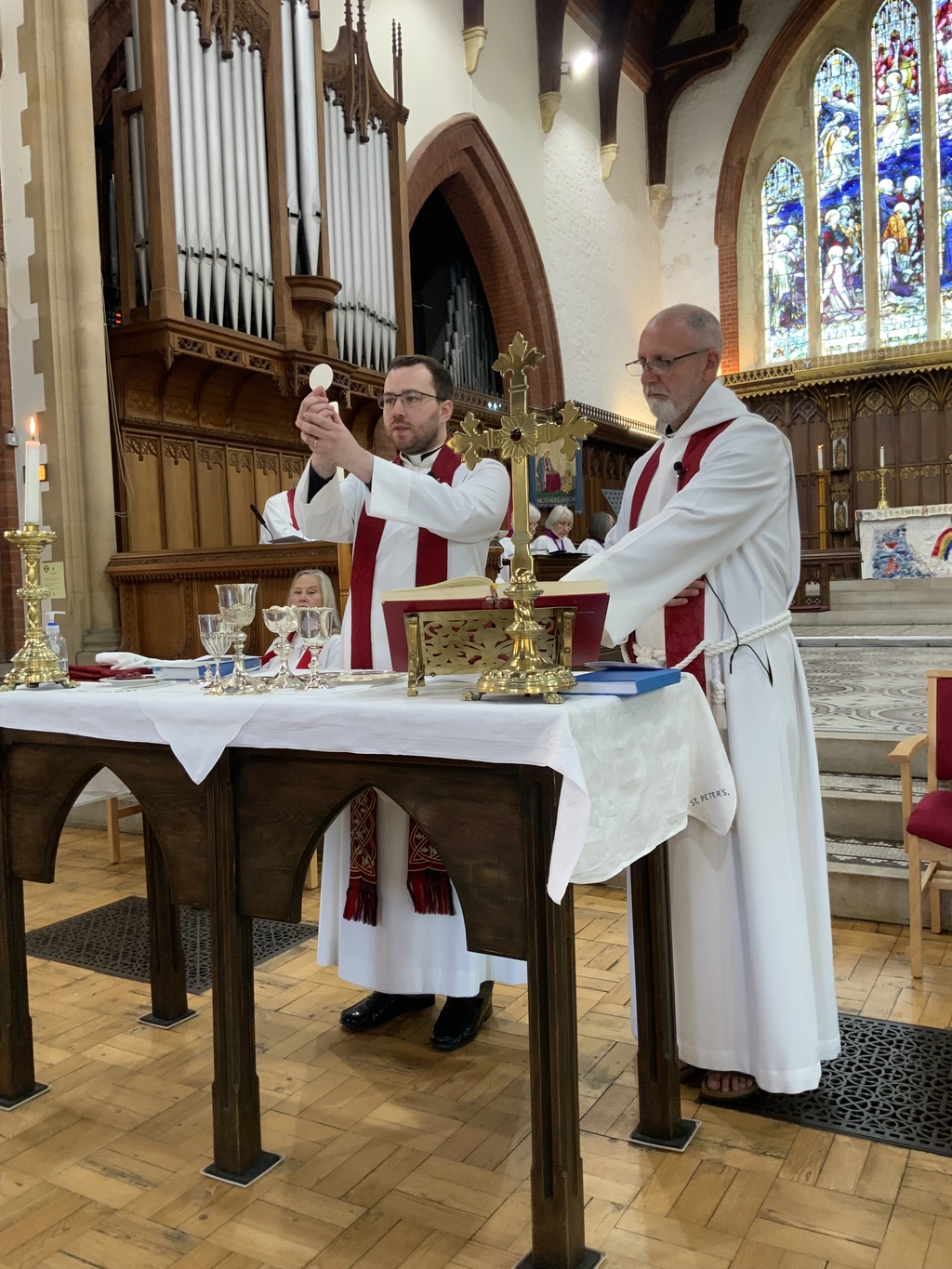In some ways, the ascension of Christ gets relegated to the footnotes of the Christian year. We have big celebrations for Christmas, Easter and for Pentecost. Poor old Ascension Day doesn’t even demand its own Sunday, let alone a liturgical season.
Even here, where we have this magnificent window depicting the ascension, we don’t tend to talk much about it. In a modern age, it’s quite an uncomfortable moment to discuss: do we really believe that this magic chap who came back from the dead floated up into the clouds?
Well, yes. But let me explain in slightly more nuanced terms.
We need a little bit of context.
It’s important to understand the Hebrew beliefs about the structure of our world. For the Hebrew people, the cosmos was in three distinct parts:
The heavens above – literally, upwards.
Earth in the middle, a disc floating upon a vast ocean.
And the underworld, Sheol, nestled in amongst the rocks – the pillars of the earth - that extended downwards.
This belief and understanding are known in our cultural discourse. It's partly why we talk about Heaven being upwards and any concept of Hell being beneath.
In the ancient Hebrew cosmology, the heavens and earth are both formed amidst a vast cosmic ocean. The oceans surrounding Sheol and the Pillars of the Earth were called ‘The great deep’ – home to great monsters like Leviathan, who are hostile to God. This idea of sea monsters in a chaotic, swirling sea of terror is, by the way, part of the significance of the miracle where Jesus calms the storm.
The heavens, on the other hand, were the dwelling place of God. Held safely above the skies of the flat disc of the Earth, which floated on the seas.
But there’s a significant problem for the early Hebrews with this cosmology. That’s death. Death, which comes to all of us in the end and is characterised by a final expulsion of breath – the breath of God which gave us life, departing our bodies for the last time. How can we fit the idea of death into this very neat, snow globe idea of creation?
The answer that they came up with was the belief in a soul – an understanding that there is more to our creation than our frail and fragile bodies. To them, after death, we would enter a shadowy existence in Sheol. A place where we would be devoid of knowledge or feeling.
It’s not dissimilar to the ancient Greek concept of the realm of Hades and shares with many ancient near-eastern cultures a thoroughly depressing concept of existence.
An early understanding of Heaven, as we might understand it, fully appears after the exile to Babylon.
Here, we begin to see the idea develop of the garden of God, a place where all is good. A place where the trials and horrors of this world are no more. A place for which we use a Greek-based word: Paradise.
So, gradually, we develop the understanding that Heaven is up and the afterlife, or what passes for it, is down below.
Into this concept and imagery comes the story of Jesus's death, Resurrection and Ascension.
We now know about the Earth as a planet revolving around a star, surrounded by the infinite and impossible complexity of the universe. We know that if you travel upwards, you won’t find God sitting on a throne, but a bunch of billionaires on vanity projects, sending celebrities like Katy Perry into the stratosphere and calling it great progress for humanity.
We need, then, to understand the cloud into which Jesus is received as a metaphor of the divine presence rather than as anything else. Why the cloud? When you're dealing with the spectacular complexity of the power of God, what better way is there to describe it to people than using imagery with which they will feel familiar?
And again, it’s where some context can take the image of a man rising into the clouds and turn it into the most spectacular and incredible message of hope.
We understand that the risen Christ at Easter is no longer subject to death and corruption. Yet, the ascended Christ is also alive and sovereign over all things. This is the moment that truly gives Christ his kingship.
That brings us back to Sheol and the miserable afterlife without knowledge or feeling. It is in death that Christ removes this miserable afterlife. In the Creed, we acknowledge his descent into hell, where salvation was brought to all those who had died before. In the ascension, we celebrate Christ coming into his kingdom.
It is here that we are truly gifted the wonderful hope that through Jesus, who sacrificed all things for us, we do not truly die but live forever in paradise. It is the ascension and enthronement of Christ that gives us the incredible hope that the sting of death is forever removed. Death becomes, in the great words of Gandalf in the film version of The Lord of the Rings, just “another path. One that we all must take.”
What better day then than this, to reflect on the funeral of Rev’d Lynn Chapman which takes place this afternoon. A woman whose love for Christ was demonstrated in the love she showed for those with whom she worked, such as here in Sheringham, where she served her curacy.
As we think on Lynn and look to the ascended Christ, we look in a sure and certain hope for the life of the world to come. That life which comes from the risen Christ ascending to Heaven.
Amen.
Rev. Iain Grant, Assistant Curate













